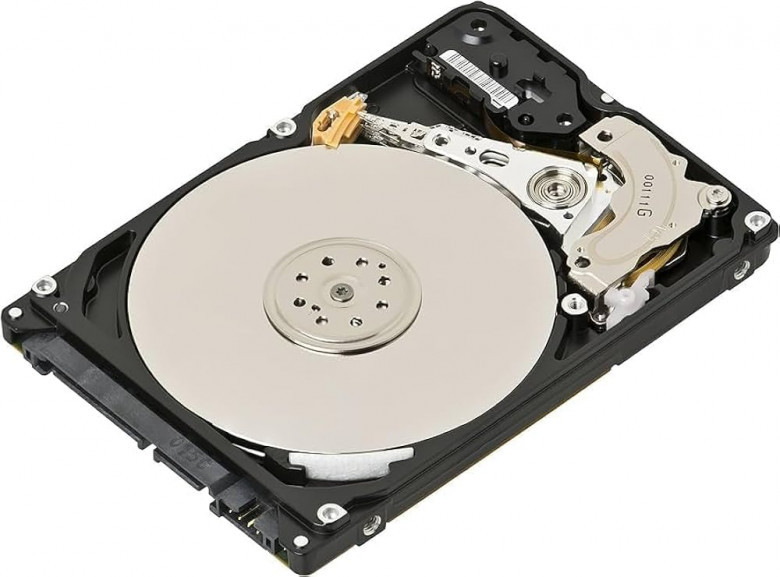views

In today’s digital world, where data is considered the new gold, the importance of effective and reliable data storage cannot be overstated. Whether you're a casual user saving family photos, a gamer needing high-speed data access, or a business safeguarding critical information, the hard disk remains an essential component of computing systems. This blog explores everything about hard disks—their functionality, types, advantages, and modern relevance.
What is a Hard Disk?
A Hard Disk Drive (HDD) is a data storage device used for storing and retrieving digital information using magnetic storage. It consists of spinning disks, known as platters, coated with magnetic material. A read/write head floats above the spinning platters to access and modify the data.
Hard disks are used in desktop computers, laptops, gaming consoles, CCTV systems, and even in servers and data centers. They are crucial for booting up operating systems, running applications, and storing files, documents, and media.
History and Evolution
The concept of the hard disk was introduced by IBM in the 1950s. The first commercial hard drive was the IBM 305 RAMAC, which stored just 5MB of data and was as large as two refrigerators. Over the decades, hard disks have dramatically evolved—not just in terms of capacity but also in size, durability, and efficiency.
Today, it's common to find HDDs that store terabytes (TB) of data in a device that fits in the palm of your hand. Modern drives also offer much faster data access speeds compared to their predecessors, making them more suitable for high-performance applications.
Components of a Hard Disk
Understanding the core components of a hard disk gives insight into its operation:
-
Platters: These are circular disks coated with a magnetic material where data is stored.
-
Spindle: Holds the platters and spins them at high speeds.
-
Read/Write Heads: These hover just above the platters to read or write data.
-
Actuator Arm: Moves the read/write head to the correct position on the platter.
-
Controller Board: Manages data flow between the computer and the hard disk.
Types of Hard Disks
1. Internal Hard Disks
These are found inside desktops and laptops. They are integrated into the system and are used for installing the operating system and storing all primary files and software.
2. External Hard Disks
These are portable drives connected through USB or other interfaces. They're ideal for backups, additional storage, or transferring data between devices.
3. Solid-State Hybrid Drives (SSHD)
SSHDs combine traditional HDD platters with a small amount of solid-state storage to provide better speed and performance compared to standard HDDs.
HDD vs SSD: What's the Difference?
Solid State Drives (SSD) are an alternative to hard disks that use flash memory rather than magnetic platters. Here’s a quick comparison:
| Feature | HDD | SSD |
|---|---|---|
| Speed | Slower read/write | Much faster |
| Durability | Prone to damage (moving parts) | More durable (no moving parts) |
| Cost | Cheaper per GB | More expensive |
| Lifespan | Moderate | Higher (with wear leveling) |
| Capacity | Up to 20TB and more | Typically up to 4TB (consumer) |
Though SSDs are gaining popularity, HDDs still hold strong for users who need large storage at an affordable price.
How Does a Hard Disk Work?
A hard disk stores data in binary form (0s and 1s). As the platters spin, the read/write heads move to the designated location to either magnetize a tiny section of the platter (writing) or detect its magnetic state (reading).
The speed of a hard disk is largely determined by its RPM (Revolutions Per Minute). Common speeds include 5400 RPM and 7200 RPM for consumer drives. Higher RPM means faster access to data.
Key Advantages of Hard Disks
-
Large Storage Capacity: HDDs can store massive amounts of data, making them ideal for media libraries, backups, and enterprise storage.
-
Cost-Effective: Per GB, HDDs are significantly cheaper than SSDs.
-
Compatibility: Widely supported by all kinds of hardware, both old and new.
-
Longevity: With proper care, HDDs can function well for many years.
When to Use a Hard Disk?
-
Backup Solutions: External HDDs are great for regular data backups.
-
Media Libraries: Ideal for storing photos, videos, and music collections.
-
Surveillance Systems: Many CCTV setups use large-capacity HDDs for recording.
-
Gaming Consoles and PCs: Some gamers prefer HDDs for storing large game files alongside SSDs for performance.
Challenges and Maintenance Tips
Common Issues:
-
Mechanical failure
-
Data corruption
-
Overheating
-
Slow performance due to fragmentation
Maintenance Tips:
-
Regular Backups: Prevent data loss by backing up critical files.
-
Defragment Regularly: This organizes files for faster access.
-
Avoid Physical Shocks: Always handle drives with care.
-
Use Antivirus Software: Protect against malware that can corrupt files.
Future of Hard Disks
With the rise of cloud computing and SSDs, many predicted the death of HDDs. However, hard disks continue to evolve. New technologies like Heat-Assisted Magnetic Recording (HAMR) and Shingled Magnetic Recording (SMR) are pushing the limits of HDD capacities to 20TB and beyond.
HDDs remain an economical choice for bulk storage, especially in data centers, personal archives, and enterprise backups.
Final Thoughts
Despite the surge of newer storage technologies, hard disks remain a reliable, affordable, and widely used option. Whether you're a student needing storage for schoolwork or a company managing terabytes of data, HDDs offer value and dependability that are hard to match.
Both Hexadecimal Software and HexaHome emphasize reliable storage solutions in their IT services and smart home products. Their infrastructure offerings often include enterprise-grade storage systems where hard disks play a pivotal role. For those seeking IT consultancy or smart tech integration, these companies provide robust and tailored solutions to meet various storage demands.
In conclusion, as long as data continues to grow, so will the relevance of the humble hard disk—a silent, spinning hero in the digital age.














Comments
0 comment